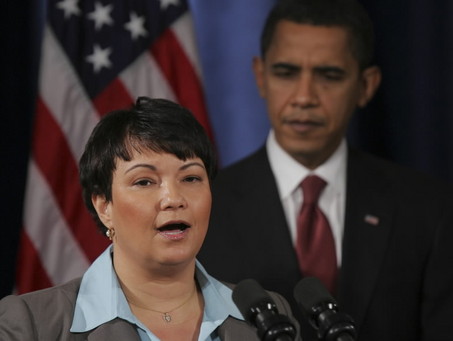 This month has definitely shown that there is a new attitude at the EPA. From a renewed emphasis on enforcement to granting requests for reconsideration regarding decisions about greenhouse gas regulation under the Clean Air Act, the events of the past few weeks confirms what those of us following environmental policy expect from the EPA under President Obama: a renewed emphasis on existing environment regulations and a commitment to reducing greenhouse gas emissions through regulatory mandates and not just inspirational goals.
This month has definitely shown that there is a new attitude at the EPA. From a renewed emphasis on enforcement to granting requests for reconsideration regarding decisions about greenhouse gas regulation under the Clean Air Act, the events of the past few weeks confirms what those of us following environmental policy expect from the EPA under President Obama: a renewed emphasis on existing environment regulations and a commitment to reducing greenhouse gas emissions through regulatory mandates and not just inspirational goals.
On February 3, the EPA announced an approximately $135 million settlement with a coal-fired power plant in Kentucky. According to one acting assistant administrator at the EPA, the settlement “sets the most stringent limit for nitrogen dioxide emissions ever imposed in a federal settlement with a coal-fire power plant.”
Under the settlement the power plant has agreed to pay a $1.4 million civil penalty and to install pollution control equipment that will reduce the plant’s combined sulfur dioxide and nitrogen dioxide emissions to below 90% of its 2007 emission levels.
The settlement is clearly just the beginning as the acting Assistant Attorney General for the Environmental and Natural Resources Division reaffirmed that the federal government “will spare no effort in its pursuit of emission reductions from power plants across the county to achieve the benefits envisioned by the Clean Air Act.”
Of course, coal-fired power plants have been in the environmental news regularly these days for their emission of greenhouse gases. New EPA administrator Lisa Jackson has made it clear that reducing greenhouse gas emissions is a priority. In her own words, “EPA will stand ready to help Congress craft strong, science-based climate legislation that fulfills the vision of the President. As Congress does its work, we will move ahead to comply with the Supreme Court’s decision recognizing EPA’s obligation to address climate change under the Clean Air Act.” This is a far cry from the position of the former EPA administrator who clearly questioned whether greenhouse gas emissions were properly addressed under the Clean Air Act.
Speaking of former administrator Johnson’s position on greenhouse gas emissions, the EPA also announced this month that it was granting a request to reconsider a memorandum Mr. Johnson issued in December 2008. In the memorandum, Mr. Johnson sought to set forth an agency interpretation that basically took carbon dioxide emission off the table as something that must be considered in what is known as the Prevention of Significant Deterioration permitting process.
The EPA is now going to provide an opportunity for the general public to comment on the matter and intends to “vigorously review the Johnson memo to ensure that it is consistent with the Obama Administration’s climate change strategy and interpretation of the Clean Air Act.” I would not be surprised if the Johnson memorandum is retracted and a new agency interpretation is issued.
Of course this is not the first request for reconsideration that the new EPA has granted. In December 2005, California had requested a waiver from the EPA that would allow California to regulate greenhouse gas emissions from motor vehicles. Under the prior administration, the EPA had denied the request. But at the urging of President Obama, on February 6 the EPA announced that it would reconsider the denial of California’s waiver request. Although the EPA’s final decision is still pending, many expect that it will grant California’s request.
The EPA has published its official notice of reconsideration. According the notice, the EPA will be conducting a public hearing in Washington DC on March 5, 2009. If you wish to speak you will need to inform the EPA no later than March 2.
Only time will tell what the EPA’s final conclusion will be with respect to greenhouse gas emission and the Clean Air Act, but this month has brought clear signs of change. Some say it’s about time; others will say we can’t afford it. Regardless of who is right, there are likely to be new legal rights and liabilities — for major energy producing companies as well as average energy consuming individuals.
Image: AP Photo





